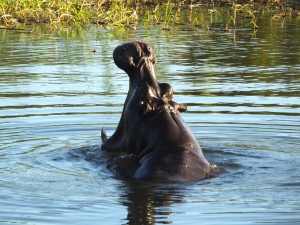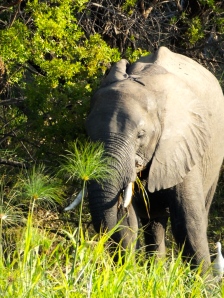As we stand at the confluence of the Zambezi and Chobe rivers, waiting for a ferry to cross the border into Zambia, we are at the meeting place of four countries – Botswana, Namibia, Zambia, and Zimbabwe. It is not a wide point in the river, but apparently the ferry is the only way to cross, as these four countries have not been able to come to an agreement regarding the funding to build a bridge. Recently, Botswana, Zambia, and Namibia have decided to move forward with a bridge project without Zimbabwe, but the construction has yet to start.
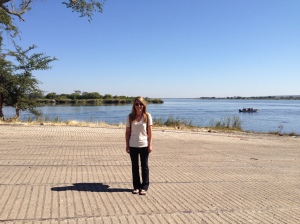
The border crossings between Botswana, Zambia, Zimbabwe, and Namibia require a ferry to cross the confluence of the Zambezi and Chobe Rivers.
The ferry is a simple metal platform to transport vehicles across, and upon arriving in Zambia we must step in a bleach to clean our shoes and prevent the spread of disease from one side to the other. This is mostly a concern due to the prevalence of foot and mouth disease in the livestock that roams freely in both Botswana and Zambia. We have come to Zambia to visit Mosi-Oa-Tunya, or the Smoke that Thunders – known around the world as Victoria Falls. From a distance, a cloud of mist rises high above the falls, which have a high volume of water this time of year as the summer rains have slowly made their way from the highlands into the Zambezi River. It is hard to believe that in a few months time the Zambian side of the falls will be nearly dry. Upon entering the park, we rent rain ponchos to keep dry as we walk the bridges that pass in front of the falls. As we approach the first bridge, it is like we have come into a monsoon – water from the falls swirls through the air resembling a heavy rain, and in the bright sun of mid-day rainbows appear on both sides. The falls are bigger than I had imagined, and it takes us twenty minutes to walk from one end to the other. Wanting a different view, we drop off our ponchos and take the drier photographic trail behind the falls, where baboons walk beside us and play beside the path.
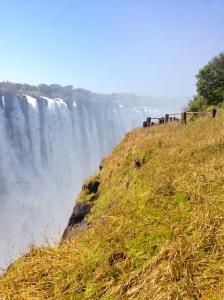
During the winter, the water levels on both the Zambian and Zimbabwean sides of the falls are quite high.
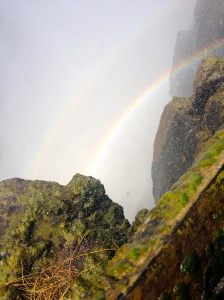
The bridge we used to walk along the falls was slippery from algae growth. The mist from the falls was so thick it was difficult to see at times, but the water droplets caused rainbows to be visible from all sides.
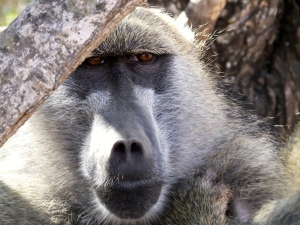
The photographic trail near the falls is shared with baboons, who frequently walked side-by-side with us on the paved path.
We check-in to our lodge, which is situated on the banks of the Zambezi River, with a view of the thundering smoke of the falls in the distance. Our lodge has arranged for us to take a dinner cruise on the Zambezi River, and we slowly patrol the river banks to spot elephants grazing, hippos yawning at the water’s surface, and crocodiles cruising by the boat. After sunset, we dock back at the lodge to get some sleep.

